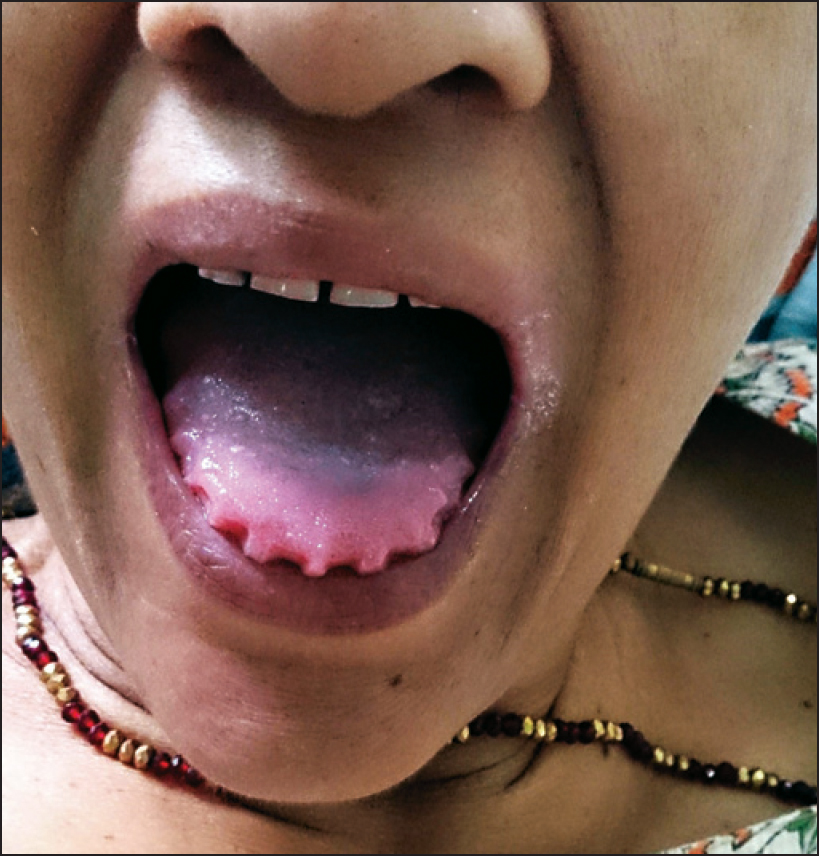Translate this page into:
Scalloped tongue: A rare finding in nocturnal bruxism
Corresponding Author:
Kolar Vishwanath Vinod
Department of General Medicine, Jawaharlal Institute of Postgraduate Medical Education and Research, Puducherry
India
drkvv@rediffmail.com
| How to cite this article: Vinod KV, Reddy P, Pillai VM. Scalloped tongue: A rare finding in nocturnal bruxism. Natl Med J India 2017;30:296 |
A 50-year-old woman, with poorly controlled type 2 diabetes mellitus for the past 10 years, presented with dysuria, increased frequency of urination and pain in both flanks for 2 weeks. On evaluation, she was found to have emphysematous pyelonephritis involving both kidneys. Her urine grew Escherichia coli. She was noted to have scalloping of the margins of her tongue [Figure - 1], but there was no macroglossia. She was not obese, did not have hypothyroidism, and there was no history of atopy, nocturnal snoring or excessive day-time somnolence. However, there was a history of nocturnal bruxism. Renal function, serum calcium, serum and urine protein electrophoresis, serum immuno fixation electrophoresis, chest X-ray, radiographic skeletal survey for lytic lesions of the bone, echocardiography of the heart and thyroid function tests were unremarkable. She received antibiotics for emphysematous pyelonephritis for 6 weeks and is doing well at 4 months’ follow-up.
 |
| Figure 1: Shows scalloping of margins of normal-sized tongue |
A scalloped tongue is a non-specific clinical finding. Scalloping of lateral tongue margins may reflect underlying macroglossia (abnormal enlargement of tongue with respect to mouth and jaws) and can be seen in conditions such as Down syndrome, hypothyroidism, tuberculosis, sarcoidosis, light chain amyloidosis, multiple myeloma, neurofibromatosis, syphilis and angioedema.[1] A scalloped tongue without macroglossia, which is much less common, has been reported in obstructive sleep apnoea[1] and rarely in nocturnal bruxism.[2] Despite detailed evaluation, we could not find a cause for scalloped tongue in our patient, other than nocturnal bruxism.
| 1. | Khanal R, Pathak R, Young J, Mainali NR, Forman DA. Clue m the tongue. J Community Hosp Intern Med Perspect 2015;5:10.3402/ jchimp.v5.26107. [Google Scholar] |
| 2. | McAuliffe P. Types of bruxism. J Ir Dent Assoc 2012;58:138-41. [Google Scholar] |
Fulltext Views
9,295
PDF downloads
3,337




